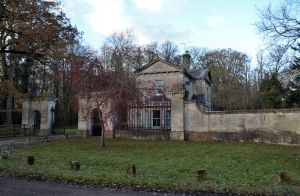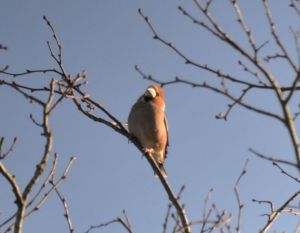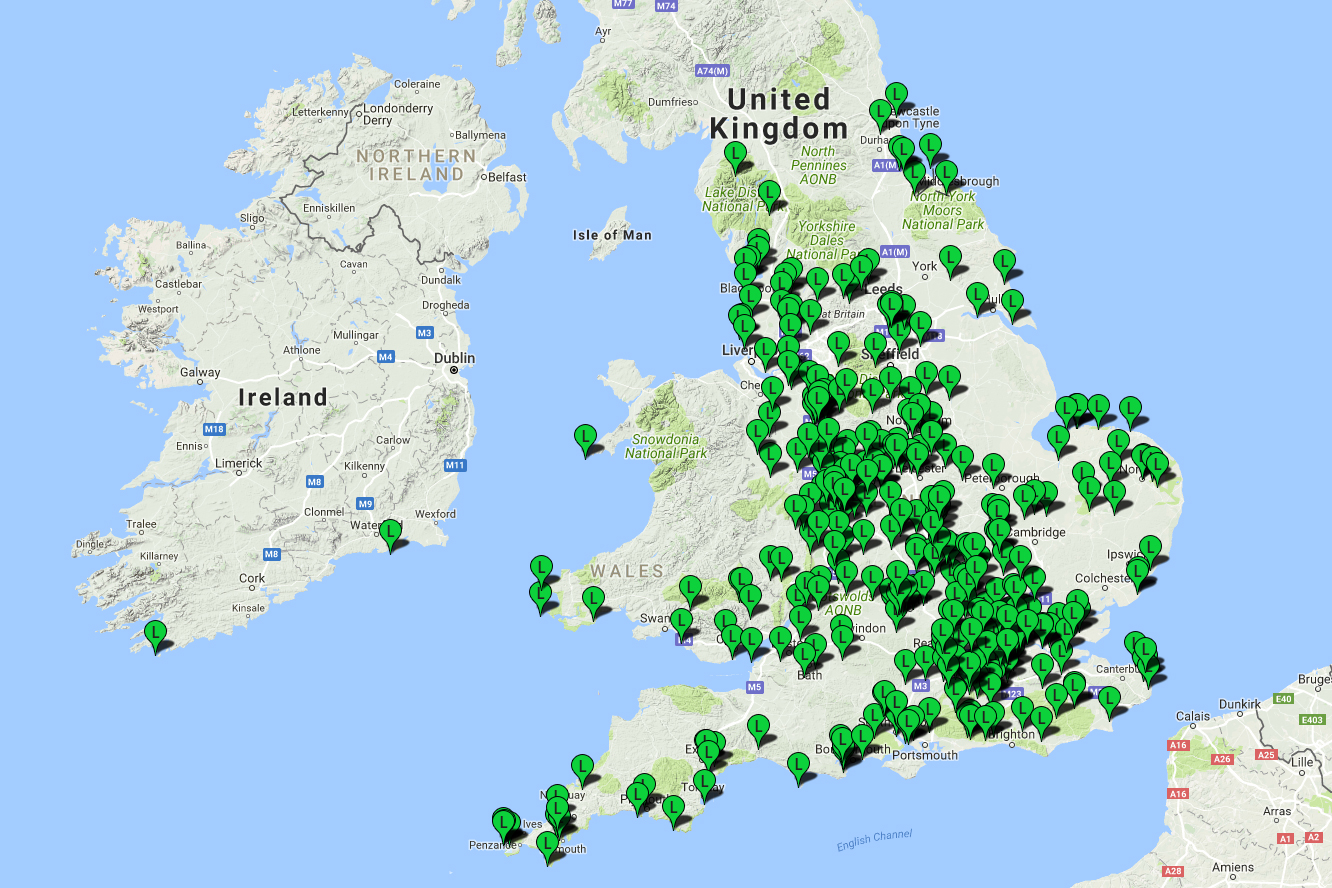This is very welcome. A persisting cold, northerly airflow has brought about the most significant incursion of Parrot Crossbill into England since the winter of 2013/14. Over the past seven days up to 30 birds have been observed daily at Santon Warren in the Norfolk Brecklands. I had half a mind to visit them this week but on Sunday (26th) a second flock of 16 was found on military training land adjacent to Sandhurst Academy in Berkshire, just an hour from home. So today I went for the latter in company with Ewan and these birds put on quite a show.
It is unusual to find the species so far south. This is one of two Crossbills from north-west European Pine forests that reach Great Britain usually in small numbers during cold spells, the other being Two-barred Crossbill. Four years ago there was a minor irruption of both species into England. Then it took four attempts before I eventually nailed a Two-barred flock in the Forest of Dean, Glos in January 2014. But I connected with another long staying flock of Parrot Crossbill at the first time of asking in Sherwood Forest, Notts over the Christmas period that winter. Since then these hardy and stylish finches have held a special fascination for me and the opportunity to experience one of them again so close to home was not to be missed.
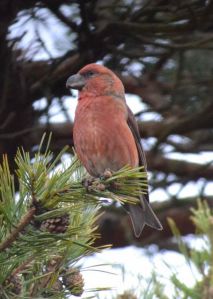
Who’s a pretty boy then? Parrot Crossbill on the Thames Basin Heaths
Parrot Crossbill resembles the more often seen Common Crossbill in plumage, but is 25 – 40% bulkier with a somewhat bigger head and larger, thicker bill. The former is described as front heavy and bull-necked and I think the individual pictured below, left today might well agree with that. They really do look like little Parrots and sometimes behave like them too, hanging upside down to feed on the seeds from Pine cones for instance. The call is less clipping and more mellow than Common Crossbill and we heard this several times as our birds moved as a flock from tree to tree.
Wishmoor Bottom is part of Swinley Forest, a substantial area of the Thames Basin Heaths SPA lying between Bracknell and Camberley. The site, also known as Barossa reserve, is MoD owned and managed by the Surrey Wildlife Trust. Much of the habitat is Pine and native deciduous woodland interspersed with open lowland heath containing gorse, birch, mires and bogs. Though a training area for the nearby Royal Military Academy there is open public access to much of the site.
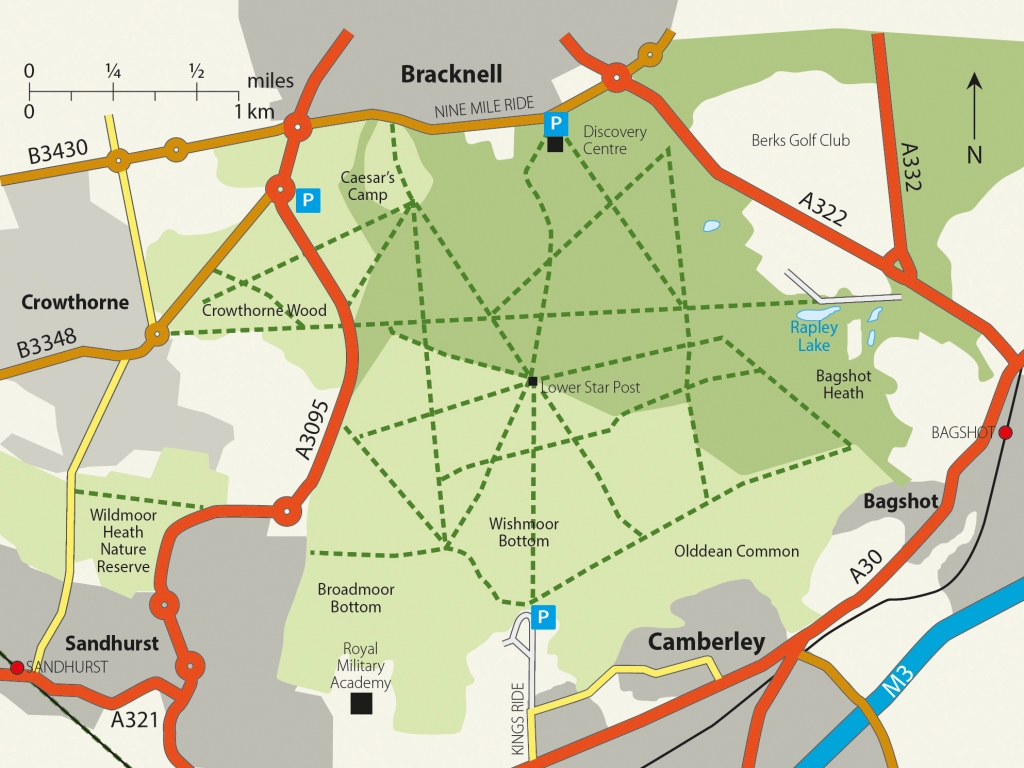
The bird interest here, depending on the season includes heathland specialties such as Dartford Warbler, Firecrest, Nightjar, Woodlark, Stonechat and Common Redstart. And the habitat is just made for wintering Shrikes and Crossbills. So there is no reason why the present visitors should not remain for longer given the abundant food supply evidenced today. Pine seeds are these birds almost exclusive diet.
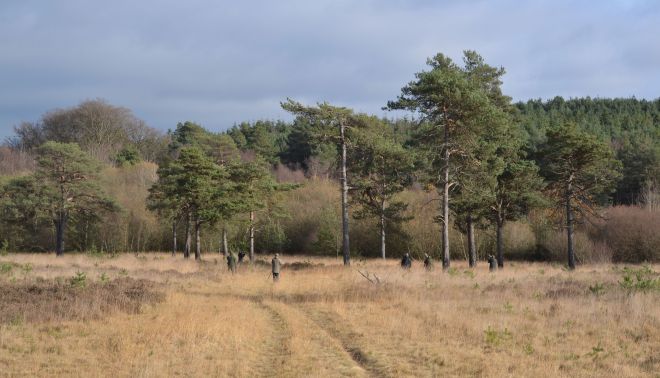
Birders watching Parrot Crossbill at Wishmoor Bottom
We reached site (above) at around 10:45am parking at the northern end of King’s Ride (SU875620), a MoD Housing Estate then walking due north. The directions from there on RBA had been quite precise and we soon located a group of around 15 birders in the area that the Parrot Crossbill were favouring. As we arrived the birds were gathered in an especially easy to view tree, after which they moved around the vicinity at intervals and the birders all followed. What unfolded offered a fascinating insight into the feeding habits of these alluring Scandinavian visitors.
We remained here for just over two hours. Over that period the birds relocated several times, showing well in the tops of Pine trees. It was noticeable how they snipped off the small cones they were harvesting with their powerful bills, sometimes then holding them aloft before pinning them down to extract the seeds from. When not feeding they would just sit calmly and watch, blending into their surroundings. This adult male (below) did so rather more openly, attracting all the lenses present. What an absolute beauty!
Adult male Parrot Crossbill surveying its surroundings (above and below)
The rust-red and grey males stood out more while the grey-green, smaller-billed females were well camouflaged. Viewed front on these birds have a distinctly broader head than Common Crossbills, while large-billed individuals seem to lack a forehead and display a flat crown. The beady eyes seem a little incongruous in such an imposing head.
Conditions were mostly overcast so not well suited to photography. Digiscoping is always a crude solution in the field and the images in this post were gained with a certain amount of cursing. My results were all what might be termed “soft focus” though they convey how these Crossbills were seen. As ever I make no pretence of being a bird photographer, merely a birder who takes pictures to record what I see. The number of photos included in this post, from 42 saved out of 330+ taken, perhaps serves to illustrate just how easy (relatively) these superb birds were to observe today, not something that can usually be said of Crossbills.
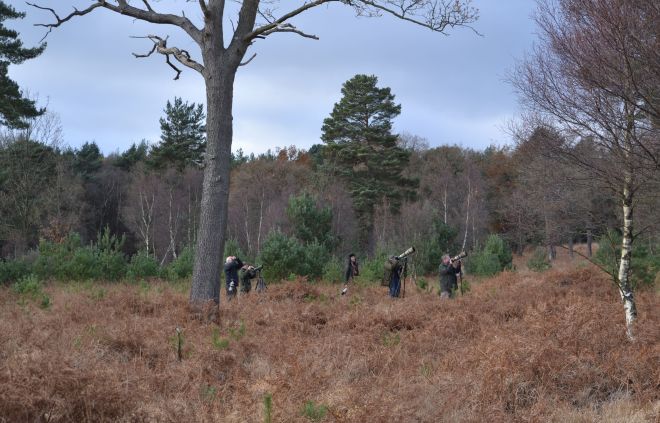
How will their pictures compare with my own?
This had been by any standards a superb experience and if the Parrot Crossbill linger I may well come back and spend more time with them this winter. This intriguing site also struck me as well worth checking out for insects in summer, not to mention speciality breeding birds. If only we had some of this habitat in Oxfordshire.


















